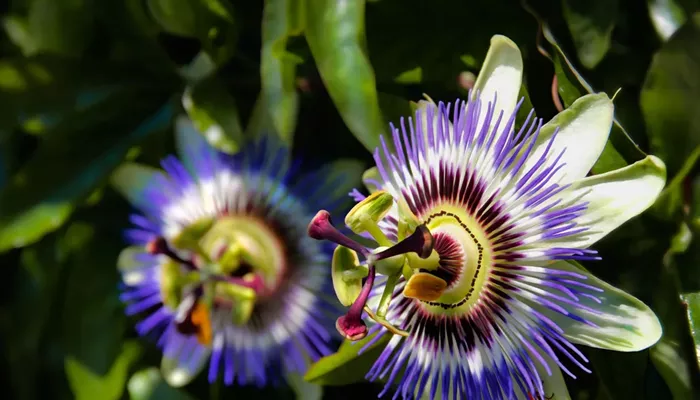Pruning passion flower climbers correctly is crucial for maintaining their health and ensuring a vibrant display of blooms in the future. With their striking and exotic flowers, it’s essential to keep these plants well-maintained.
Passion flowers, like Passiflora incarnata, or wild maypop, are vigorous vines native to the southeastern United States. Without regular pruning, these plants can quickly become overgrown and unruly.
Timing Your Pruning
To keep passion flowers in check, it’s important to know the best times to prune. These fast-growing plants can cover fences and walls quickly, growing up to 20 feet in a single year. Therefore, pruning is a necessary task, especially for those with smaller gardens.
Pruning should be done in two main periods:
Late Summer to Early Fall: After the flowering season, give your plant a light trim. This helps manage its size and maintain its shape.
Spring: Before new growth starts, perform more extensive pruning if needed. This can help control or rejuvenate an overgrown climber. Keep in mind, however, that pruning in spring may reduce the number of blooms for the first year since passion flowers bloom on new growth.
How to Prune Passion Flowers
Myles Stewart Irvine, a garden expert and passion flower breeder, advises on the best pruning practices. Most passion flowers can thrive down to US hardiness zone 8, and some native varieties can even endure zone 5. These climbers can quickly fill trellises and supports, making proper pruning essential.
In late summer and fall, trim any long, messy stems and secure the plant to its supports. This helps the plant stay organized and provides stability during storms.
In early spring, once the danger of frost has passed, you can perform more extensive pruning. Remove messy growth but leave two to three long, woody stems. These will be the source of new growth.
Important Considerations
The approach to pruning can vary depending on your climate. In tropical regions, plants can handle more aggressive pruning. In cooler northern climates, avoid heavy pruning as it can harm the plant. Always leave a few stems with new growth to ensure the plant’s survival.
Use clean, sharp tools for pruning, such as Felco snips, to efficiently cut away dead or damaged stems. While removing old stems, try to preserve a few with fresh growth to keep your plant healthy.
By following these guidelines, you can ensure your passion flower climbers remain healthy and continue to produce their beautiful blooms year after year.


